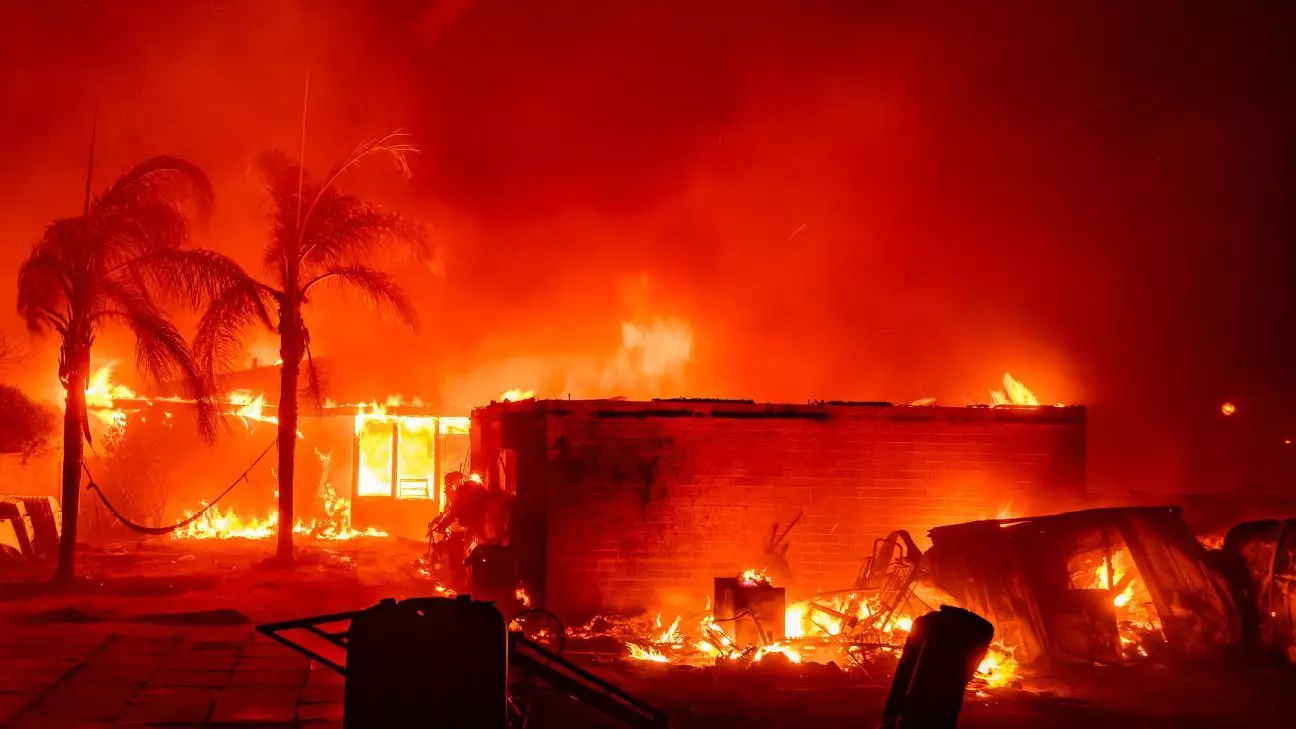As the wildfire crisis continues to rage across California, particularly in Los Angeles, the response from various sectors has highlighted both the challenges and resilience of the community. Thousands of residents have been forced to evacuate their homes, and the battle against flames has significantly impacted air quality. In the midst of this calamity, the NFL has stepped in to assess the implications for a highly anticipated wild-card playoff game between the Minnesota Vikings and the Los Angeles Rams. The league’s contingency plans underscore a broader commitment to safety and adaptability in the face of adversity.
The ramifications for the NFL are tangible as they plan for all contingencies surrounding this crucial game. The league has announced that should the situation deteriorate, the event may be relocated to Arizona’s State Farm Stadium, home to the Arizona Cardinals. This potential move is not without precedent; the NFL previously relocated a game due to wildfires in 2003, showcasing its readiness to adapt for player and fan safety. Such measures emphasize that while the playoffs were meant to be a time of competition and excitement, player welfare remains a top priority.
For the Rams, whose training facilities are situated near the troubled areas, the fires present a dual-layered challenge. On one front, the physical safety of players and staff must be secured. A team official confirmed that, as of the latest updates, no personnel had been directly affected by the fires. However, the emotional toll and the mental health of the athletes cannot be overlooked. Notably, Rams star wide receiver Cooper Kupp expressed solidarity with those impacted, using his platform to highlight the efforts of first responders and firefighters battling the flames.
In parallel, the Los Angeles Chargers are also grappling with the crisis, altering their practice schedules to mitigate outdoor exposure amid hazardous air quality levels. The situation underscores a critical intersection between sports and public health, as the players need to maintain their competitive edge while remaining conscious of their wellbeing. The varying air quality indices, which reached alarming levels ranging from “very unhealthy” to hazardous, prompted adjustments in practice routines, illustrating how environmental factors can dictate the training regimens of professional athletes.
Confronted with the crisis, the Chargers have taken a proactive stance by pledging $200,000 to local relief efforts, including support for the American Red Cross and pet rescue organizations. Such initiatives reflect the team’s commitment not just to their players’ welfare, but to the broader community affected by the fires. In doing so, they foster a sense of unity that transcends sports, serving as a reminder of the interconnectedness between athletes and the communities they inhabit.
While leadership and strategic planning are essential, the emotional narratives of those involved are equally important. Chargers’ staff, such as wide receivers coach Sanjay Lal, shared personal experiences of grappling with power outages and unsafe conditions due to the wildfires, revealing the human side of this sporting backdrop. These stories enhance the understanding that, while athletes may be seen as larger-than-life figures, they are part of a community that faces the same adversities as every other resident.
The context of these wildfires extends beyond immediate safety concerns, inviting broader discussions on climate change and its increasingly volatile impacts. Traditionally, wildfire seasons in California occurred between June and October; however, the intensity and duration of these crises are changing, leading to destructive fires occurring even in the winter months. As weather patterns evolve due to climate change, higher temperatures and lower rainfall contribute to a persistently high-risk environment.
The spate of recent wildfires challenges California’s infrastructure and emergency response systems, putting stress on resources already stretched thin. With reports of fatalities and injuries resulting from the fires, it is clear that while sports can rally communities in good times, they also must meet pressing social responsibilities amid crises.
As the NFL navigates the immediate challenge of scheduling playoff games amidst California’s devastation, it is evident that the impact of natural disasters extends far beyond logistical arrangements. The prioritization of health and safety, community engagement, and raised awareness about climate change places the unfolding narrative within a larger societal context. Sports organizations like the NFL can play a pivotal role in fostering resilience and solidarity, serving as beacons of hope and orchestrating support for those in need during the most trying of times. Ultimately, the intertwining of sports and community emphasizes the power of unity in the face of adversity.


Leave a Reply